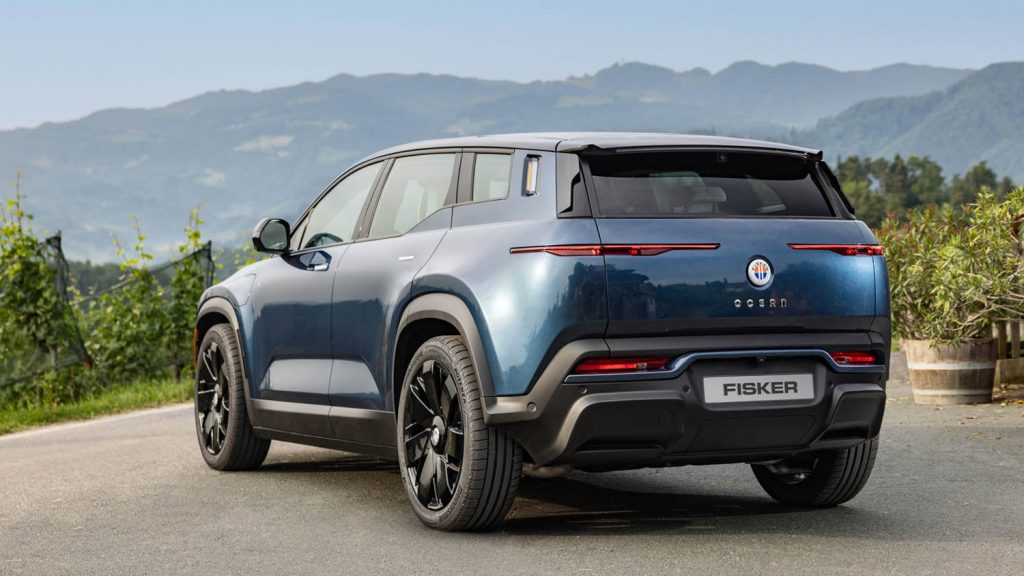Electric car company Fisker was already in trouble, but a negative review on social media may have slammed the brakes on recovery. As Stephen Holmes writes, it’s a cautionary tale that all product designers should heed
Businesses love social media. It’s an outstanding insight generator, simultaneously capable of stimulating market demand and signalling where product development should go. But it can also leave a product dead in the water.
Recently, I was interested to hear about Fisker, an American electric car company that has been experiencing tough times lately and some social media coverage that went viral.
At the heart of this story is a review by American YouTuber Marques Brownlee (also known as MKBHD) of the company’s Ocean model, a car trying to do things differently in a sea of bland electric SUVs.
The title of the review says it all: ‘The Worst Car I’ve Ever Reviewed’. In fact, the content of the review wasn’t entirely damning, but with the kind of clout enjoyed by MKBHD, that title would be detrimental to any carmaker looking to launch a new model.
To put Brownlee’s online reach into perspective, his channels have more subscribers than the New York Times, Washington Post, Wall Street Journal and USA Today combined. As I write this, his 20-minute review of the Fisker Ocean has received over five million views. This is supersized social media, lending huge prominence to just one person’s viewpoint.
Production paused
Fisker was already in a precarious place. The Ocean is its only model on sale. Having reported huge financial losses at the turn of the year, it announced it would pause production of the Ocean for six weeks starting 18 March. Talks with Nissan, which was angling to buy a stake in the company, broke down.
Watching MKBHD’s review, I’m struck by the car itself. To my mind, it’s a perfectly viable mode of transport, offering a plush interior and some nice exterior features. It has even won an international iF Design Award as the Best Electric SUV of 2024.
The review, meanwhile, spends very little time looking at the kind of characteristics typically considered by the motoring press – power, handling, aesthetics and so on.
Far more time instead is devoted to the in-car experience. Marketed as a luxurious yet eco-conscious choice, the Ocean is filled to the brim with gizmos and quirky electrics, including a rotating media screen and a solar panel roof.
And like many social media reviews, this one seems to judge the car on a similar basis to high-end electrical goods, rather than on its ability to take on the corners of a B-road, overtake on a motorway, or squeeze into a tight parking space.
Highlighted faults include a limit on the number of times a driver can pull away using ‘launch control’; the size of the vanity mirror on the sun visor (too small!); the complete absence of a glove box.
In short, there’s nothing in this review that would make me believe the Fisker Ocean really is the worst car ever.
Ill-functioning software seems to have been the problem in many areas where the Ocean was marked down by its reviewer.
Reversing cameras failed to turn on. Bluetooth didn’t connect. Fisker itself responded to the review by saying that a software update was imminent that should fix the majority, if not all, of these issues. But the damage was already done.
Typically, a brand would weather this sort of PR disaster and soldier on, but Fisker was banking on sales of the Ocean to stay afloat
A cautionary tale
It’s a cautionary tale for any company looking to push out a physical product before it’s ready, with the hope of fixing issues via over-the-air and service updates.
As product design speeds up, thanks to advances in technology and the knock-on effect these have on workflows, there’s pressure to go even faster.
And with more products than ever before being electrified, the ability to quickly update software remotely, via an internet connection, is being leaned on heavily. Perhaps too heavily.
Typically, a brand would weather this sort of PR disaster and soldier on, but Fisker was banking on sales to stay afloat. With one of the most influential YouTubers in the world dismissing its only product, there seems little chance of redemption arriving.
Social media can influence public opinion, both positively and negatively, in ways no other medium does. So the bottom line is this: it’s best to make sure that your product can stand up to scrutiny from Day One, otherwise it might soon find itself at the end of the road.
This article first appeared in DEVELOP3D Magazine
DEVELOP3D is a publication dedicated to product design + development, from concept to manufacture and the technologies behind it all.
To receive the physical publication or digital issue free, as well as exclusive news and offers, subscribe to DEVELOP3D Magazine here






